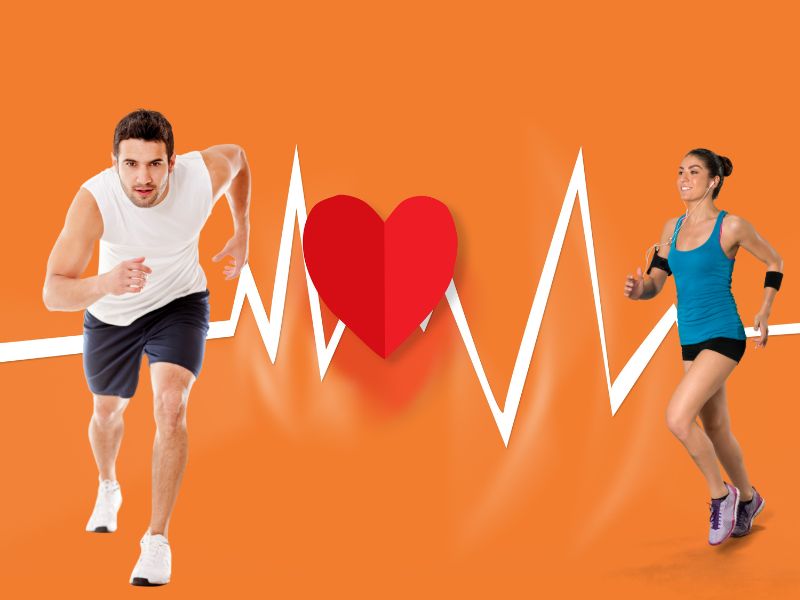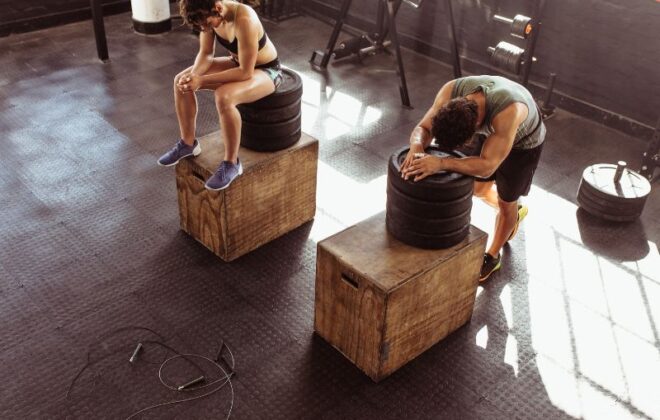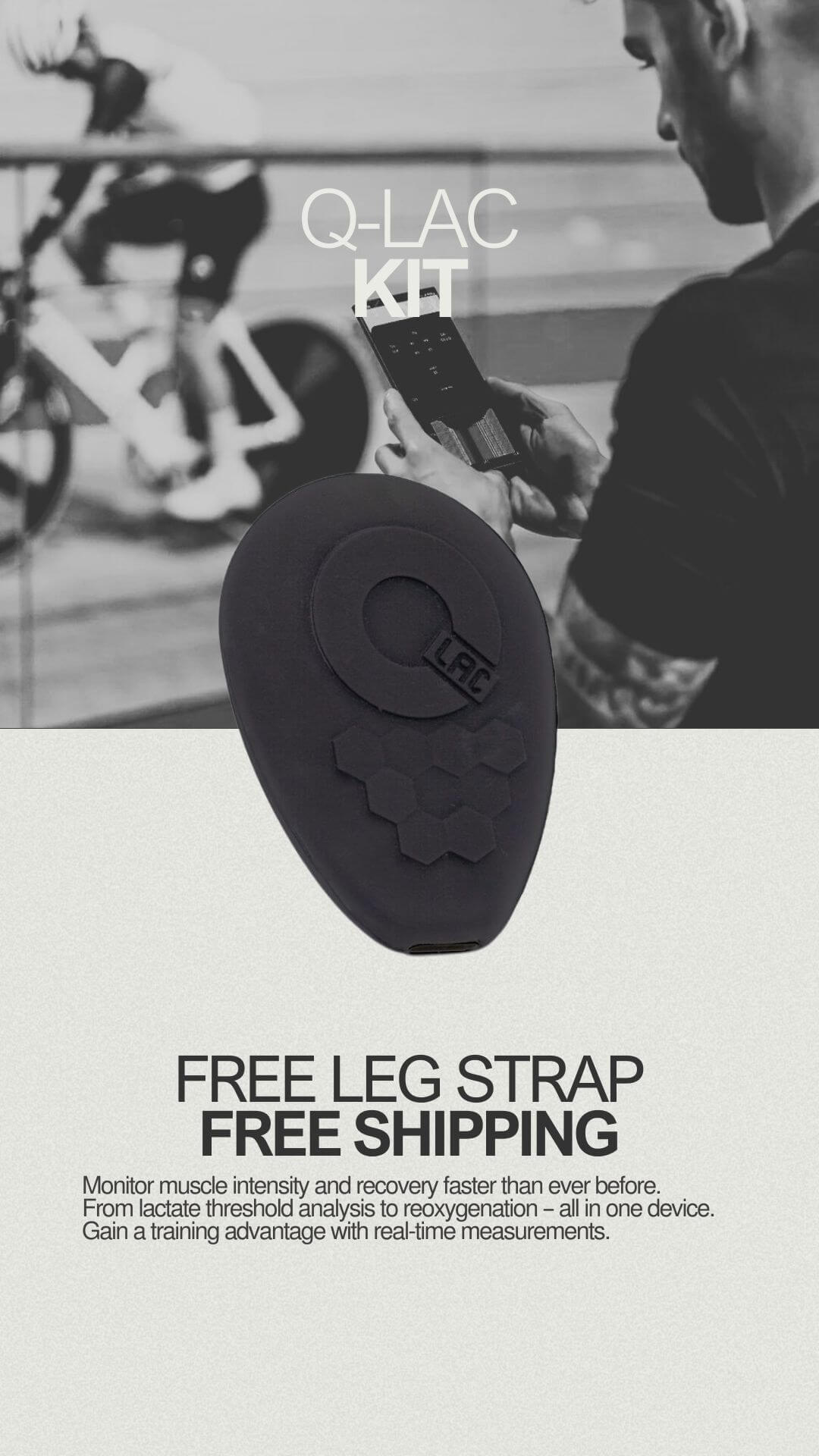What are heart rate zones? What are training intensity zones?
Training with a heart rate monitor gained popularity among physical activity enthusiasts many years ago; only new technologies are able to demonstrate significant advantages over the analysis of this well-known parameter. As heart rate is an indirect parameter, the final result is influenced by many external factors such as temperature, stress, diet, sleep efficiency and quantity, or hydration of the body. Due to the numerous day-to-day variations of this parameter, it is worthwhile to compare it with other direct parameters coming straight from our muscles. Heart rate zones are percentage ranges of maximum heart rate, which, can be monitored, thus controlling the intensity of training. However, their variability means that, often relying solely on this parameter, we train too hard or too weak, failing to use our full potential.
With the Q-LAC sensor, not only will you collate your muscle oxygenation results with your heart rate zones, but you will also be able to adapt your training to them in real time. This tool will help you optimise your workout planning and monitoring, protecting you from overtraining or training at too low an intensity. Knowing and using the heart rate zones collated with Q-LAC is a step towards a more informed and effective workout.
What are heart rate zones?
Heart rate zones are ranges based on a percentage of maximum heart rate. They allow you to control the intensity of your workout and adapt it to your individual needs and training goals. Using the correct heart rate zone when exercising influences the effectiveness of the workout and how much benefit a particular physical activity will bring. The determination of heart rate zones is closely related to the concept of maximum heart rate, which is the maximum number of beats the heart can perform per minute. This value is different for each person. The simplest and most common way to determine maximum heart rate is the formula: 220 minus the person's age, but it is effective mainly for people taking their first steps in sport, when progress is largely related to a large increase in training volume. As you grow as an athlete, it is worth relying on more individualised methods of planning and managing your training. Heart rate zones can change depending on age, physical condition and other individual factors on any given day. Therefore, it is important to monitor your heart rate regularly and contrast it with other much more reliable parameters.
Heart rate zones are most commonly divided into:
- Zone I (very light): Fitness is maintained at 50-60% maximum heart rate. It aims at general strengthening.
- Zone II (medium intensity): Performance at 60-70% maximum heart rate. Suitable for fat burning.
- Zone III (moderate): Uses 70-80% maximum heart rate. Used to improve overall fitness.
- Zone IV (intensive): Uses 80-90% of maximum heart rate. Helps increase the body's tolerance to anaerobic metabolism.
- Zone V (very intensive): Uses over 90% of maximum heart rate. For experienced athletes preparing for competition.
How do you use heart rate zones in your training?
In order to maximise the effectiveness of the exercises, it is crucial to use the respective training intensity zones, which makes it possible to compare them with, for example, the variation in muscle oxygenation, which, thanks to Q-LAC, can be analysed during daily training. This allows us to control training intensity and adapt it to individual needs and training goals in a very simple yet highly individualised way, which is a huge advantage over different, generic methods. Therefore, simply determining which heart rate zone you are currently in based on your heart rate alone can be a major challenge. It is worth using a professional device to help you accurately determine your training intensity zones. Q-LAC is a sensor that analyses the variation in muscle oxygenation and determines the zones in relation to lactic acid concentration using a non-invasive method. As a result, we are able to continuously indicate the appropriate training intensity and actual muscle condition with unprecedented precision. Q-LAC uses near-infrared spectroscopy to accurately measure strain and overall muscle condition in real time. The ratio of light emitted to light reflected by muscle tissues at the appropriate wavelengths provides the ability to indicate much more accurately the appropriate training intensity than was previously possible.
What is the maximum oxygen ceiling? How do you increase it?
The maximal oxygen ceiling (VO2max) is one of the key indicators in endurance sports. It expresses the volume of oxygen that the body can use during a workout. It is measured in units of ml/kg/min, which means millilitres of oxygen consumed per kilogram of body weight in one minute of exercise. It is an objective and practical indicator of physical performance and is directly related to the variability of muscle oxygenation, however, due to the need for masked training, it is usually only carried out under laboratory conditions. In order to increase the oxygen ceiling, adjustments can be made to the training plan by systematically increasing training intensity slightly or introducing interval training. It is important to ensure that the parameters of muscle oxygenation variability are monitored as closely as possible due to the impossibility of performing so-called daily blood gasometry, which requires laboratory conditions. Muscle oxygenation variability is very strongly correlated with respiratory parameters such as VO2max, but much simpler to analyse on a daily basis during traditional training.
Taking care of the right body composition, such as reducing body fat levels, will allow more oxygen to be delivered to working muscles and improve exercise economy. The Q-LAC sensor can be an invaluable tool in the training process aimed at increasing the oxygen ceiling. Thanks to the sensor, it is possible to determine the variation in oxygenation in real time and to know when the body is not keeping up with the training intensity. In addition, after a workout, the Q-LAC sensor provides a detailed analysis of your training, allowing you to identify areas for improvement, set metabolic thresholds and adjust your training plan to achieve better results under any conditions outside the laboratory.





